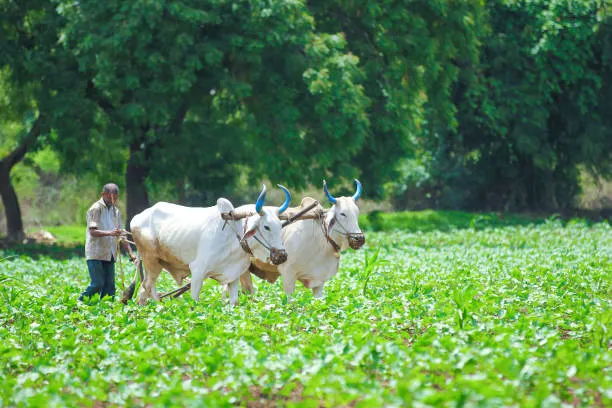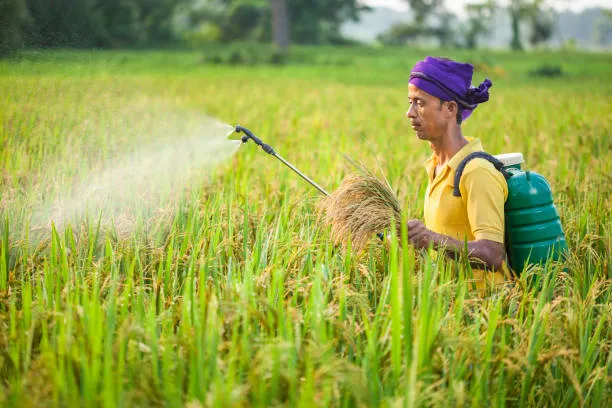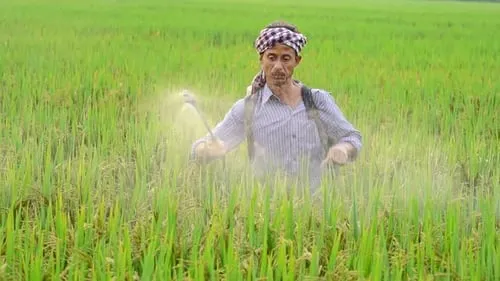Introduction
Weed management is one of the most critical aspects of modern agriculture, affecting crop yields and farm profitability. Glyphosate 71% SG (Meera 71) has emerged as one of the most effective non-selective herbicides for controlling a wide range of annual and perennial weeds. As a systemic herbicide, it provides complete weed control in agricultural fields, orchards, non-crop areas, and plantation crops.
This 800-word, plagiarism-free blog provides a comprehensive overview of Meera 71, including its mode of action, benefits, target weeds, application methods, safety precautions, and environmental considerations.
What is Glyphosate 71% SG (Meera 71)?
Meera 71 is a soluble granule (SG) formulation containing 71% glyphosate as the active ingredient. Glyphosate is a broad-spectrum, non-selective herbicide that kills weeds by inhibiting a key enzyme essential for plant growth.
Key Features:
- Chemical Class: Phosphonoglycine (Organophosphorus compound)
- Mode of Action: EPSP Synthase Inhibitor (blocks amino acid synthesis)
- Formulation: 71% Soluble Granule (SG)
- Target Weeds: Broadleaf weeds, grasses, sedges, and perennial weeds
- Crop Compatibility: Used as a pre-planting herbicide in croplands and for non-crop areas
Mode of Action
Glyphosate works by:
- Inhibiting the EPSP synthase enzyme, which is essential for the synthesis of aromatic amino acids (tyrosine, tryptophan, phenylalanine).
- Disrupting protein production, leading to slow plant death.
- Providing systemic action – absorbed through leaves and translocated to roots and rhizomes.
Key Advantages of Its Mode of Action:
- Complete weed control (kills both shoots and roots).
- Effective against perennial weeds with deep root systems.
- No soil activity (does not affect seeds or new crops when used correctly).
Benefits of Glyphosate 71% SG (Meera 71)
- Broad-Spectrum Weed Control – Kills grasses, broadleaf weeds, and sedges.
- Systemic Action – Ensures complete eradication, including underground roots.
- No Soil Residual Effect – Safe for rotational crops when used as directed.
- Cost-Effective – Requires low dosage per acre compared to other herbicides.
- Rainfast After 6 Hours – Resistant to wash-off once absorbed.
Target Weeds & Usage Areas
1. Common Weeds Controlled
- Grasses: Cynodon dactylon (Doob grass), Echinochloa spp. (Barnyard grass)
- Broadleaf Weeds: Parthenium, Amaranthus (Chaulai), Chenopodium (Bathua)
- Sedges: Cyperus rotundus (Nutgrass), Cyperus esculentus
- Perennial Weeds: Lantana, Congress grass
2. Recommended Usage Areas
- Agricultural Fields (Pre-planting weed control in maize, wheat, soybean)
- Fruit Orchards (Mango, citrus, apple plantations)
- Tea & Coffee Plantations
- Non-Crop Areas (Railway tracks, industrial sites, bunds)
Recommended Dosage & Application Method
1. Foliar Spray (Most Common Method)
- Dosage: 4–6 g per liter of water (or 1.5–2 kg per acre in 200–250 L water).
- Spray Timing: Apply when weeds are actively growing (before flowering).
- Best Time to Spray: Morning or evening (avoid high temperatures).
- No Rain for 6 Hours – Ensures proper absorption.
2. Knapsack Sprayer Application
- Use a flat fan nozzle for uniform coverage.
- Spray directly on weeds, avoiding crop contact.
3. Special Cases (Perennial Weeds)
- Higher dosage (8–10 g/L) for deep-rooted weeds like Cyperus.
Safety Precautions & Handling
- Wear PPE: Gloves, mask, goggles, and full-sleeved clothing.
- Avoid Drift – Use a shielded sprayer near crops.
- No Eating/Drinking During Spraying – Prevent accidental ingestion.
- Storage: Keep in a cool, dry place, away from food and feed.
- Disposal: Triple-rinse containers before disposal.
Environmental & Resistance Management
- Low Soil Persistence – Degrades naturally in soil.
- Toxic to Aquatic Plants – Avoid contamination of water bodies.
- Resistance Risk: Rotate with herbicides having different modes of action (e.g., paraquat, 2,4-D).
Conclusion
Glyphosate 71% SG (Meera 71) is a highly effective, systemic herbicide for complete weed control in agricultural and non-crop areas. Its broad-spectrum action, cost-effectiveness, and no soil residual effect make it a farmer-preferred choice.
However, responsible usage is crucial to prevent weed resistance and environmental harm. Always follow label instructions, use proper protective gear, and adopt integrated weed management (IWM) practices.
Final Recommendations for Farmers
Spray on young, actively growing weeds for best results.
Avoid spraying on windy days to prevent drift.
Rotate with other herbicides to delay resistance.
By using Meera 71 wisely, farmers can achieve weed-free fields, higher yields, and better profitability.
Disclaimer: Always follow the product label and local regulations. Consult an agronomist for crop-specific recommendations.
Sourashis Chanda brings readers their unique perspective on Business, Economy, Health and Fitness. With a background in Health and Physical Fitness of 2years, I am dedicated to exploring [what they aim to achieve with their writing, on the sustainable Economy of the country, various pro tips about business, latest goverment news, with some tips in health are and Fitness.







